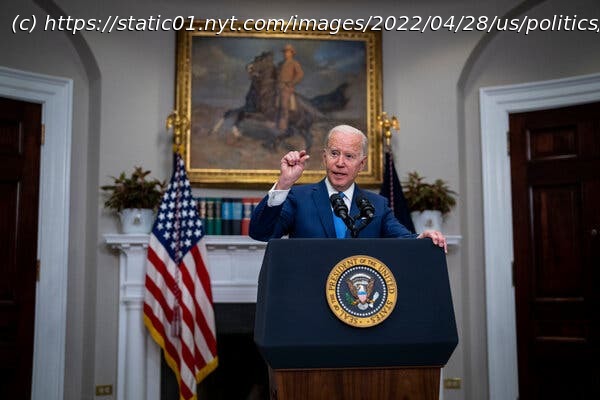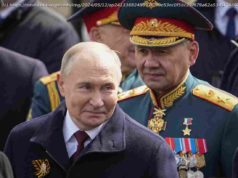“The cost of this fight is not cheap,” President Biden said. He also sent Congress a plan to increase the government’s power to seize luxury yachts, aircraft and other assets of Russian oligarchs.
President Biden signaled a vast increase in America’s commitment to defeating Russia in Ukraine on Thursday as he asked Congress to authorize $33 billion for more artillery, antitank weapons and other hardware as well as economic and humanitarian aid. The request represented an extraordinary escalation in American investment in the war, more than tripling the total emergency expenditures and putting the United States on track to spend as much this year helping the Ukrainians as it did on average each year fighting its own war in Afghanistan, or more. “The cost of this fight is not cheap,” Mr. Biden said at the White House. “But caving to aggression is going to be more costly if we allow it to happen. We either back the Ukrainian people as they defend their country or we stand by as the Russians continue their atrocities and aggression in Ukraine.” Mr. Biden also sent Congress a plan to increase the government’s power to seize luxury yachts, aircraft, bank accounts and other assets of Russian oligarchs tied to President Vladimir V. Putin and use the proceeds to help the Ukrainians. Just hours later, Congress passed legislation allowing Mr. Biden to use a World War II-era law to supply weapons to Ukraine on loan quickly. The latest American pledge came as Moscow raised the prospect of a widening conflict with the West. Russian officials accused the United States and Poland of working together on a covert plan to establish control over western Ukraine and asserted that the West was encouraging Ukraine to launch strikes inside Russia, where gas depots and a missile factory have burned or been attacked in recent days. A Russian missile strike setting off a fiery explosion in central Kyiv shattered weeks of calm in the capital and served as a vivid reminder that the violence in Ukraine has not shifted exclusively to the eastern and southern portions of the country, where Russia is now focusing its efforts to seize and control territory. Russian forces are making “slow and uneven” progress in that part of Ukraine but are struggling to overcome the same supply line problems that hampered their initial offensive, the Pentagon said. The strike came on the same day that President Volodymyr Zelensky of Ukraine was meeting with António Guterres, the U.N. secretary general, just a few miles away in Kyiv, a visit that was no secret in Moscow. Mr. Guterres arrived in Ukraine, after sitting down with Mr. Putin in Moscow, in hopes of securing evacuation routes for besieged Ukrainian civilians and support for the prosecution of war crimes. In the hours before the latest strike, Mr. Guterres toured the stunning wreckage in Borodianka, Bucha and Irpin, three suburbs of Kyiv that have borne the heavy cost of the fighting. Standing in front of a row of scorched buildings where dozens of people were killed, he called Russia’s invasion “an absurdity” and said, “There is no way a war can be acceptable in the 21st century.” In his nightly address, Mr. Zelensky condemned the strike, saying it revealed Russia’s “true attitude to global institutions” and was an effort to “humiliate the U.N.” He vowed a “strong response” to that and other Russian attacks. “We still have to drive the occupiers out,” he said. Just as the United States was ramping up its flow of arms to the battlefield, the German Parliament voted overwhelmingly to deliver heavy weapons to Ukraine, a largely symbolic move to show unity after the government announced the plan earlier this week. A day after Russia cut off gas supplies to Poland and Bulgaria, the German chancellor, Olaf Scholz, said his country must be prepared for the possibility that Germany could be next.
Home
United States
USA — Political Biden Digs In on Ukraine Strategy, Seeking $33 Billion More in Aid






